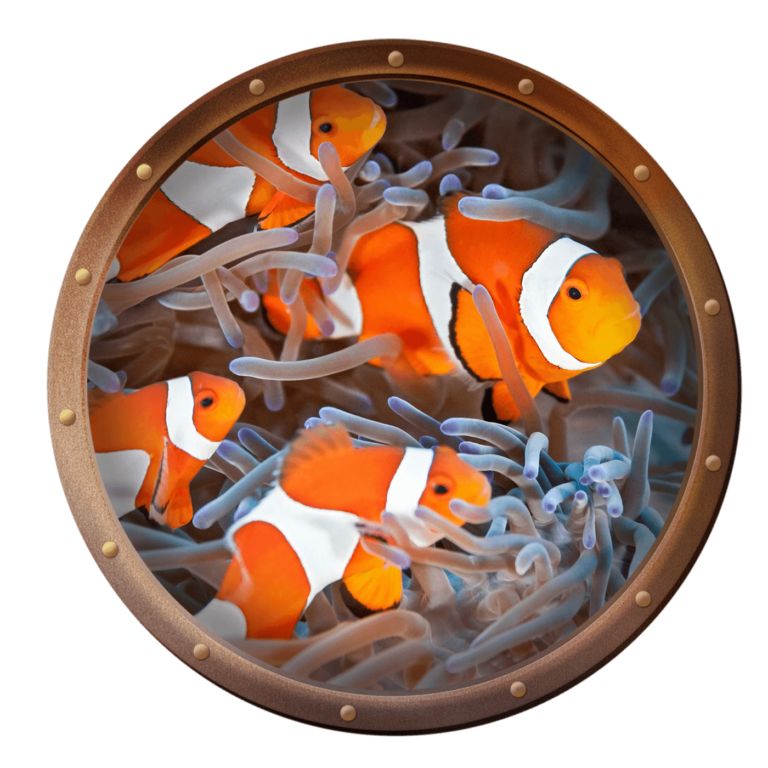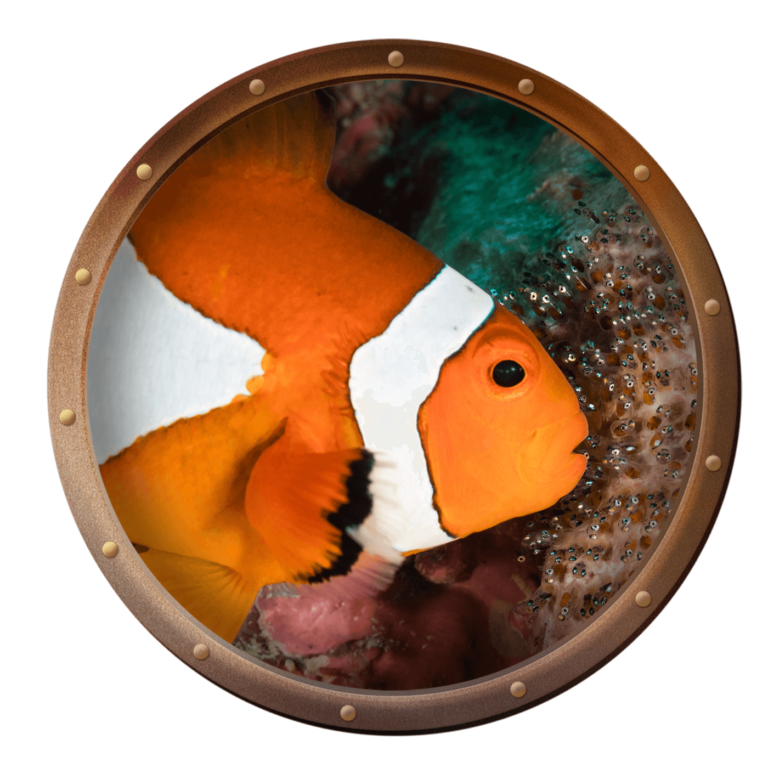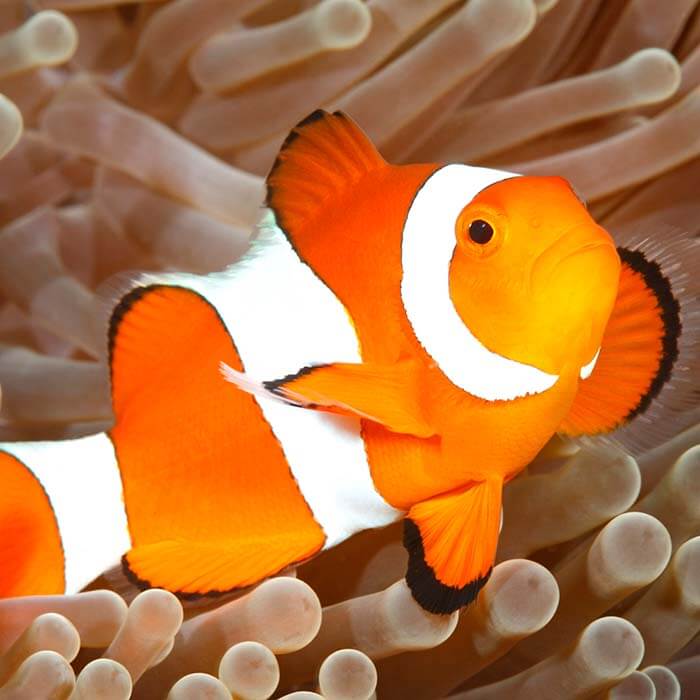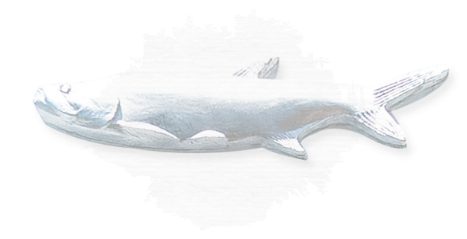The ocellaris clownfish, Amphiprion ocellaris, is the little orange, black and white fish made famous in an animated film. Clownfish are also known as anemonefish due to their association with sea anemones. There are 30 species of anemonefish, 29 in the genus Amphiprion and one in the genus Premnas, native to the Indo-West Pacific.
Clownfish have a mutualistic symbiotic relationship with anemones. Both species benefit from the association. Anemones are cnidarians; they have stinging tentacles that are used to catch prey and as a defense. Typically, within the tentacles of an anemone is the last place that a fish would want to be, but the clownfish calls it home. When moving into a new anemone, the clownfish touches different parts of its body to the tentacles, building up a tolerance and a mucus layer that protects it from the stinging cells. The clownfish now has a home that other fish will steer clear of! The anemone benefits from the presence of the fish as well. Clownfish are fiercely territorial and will charge at anything that gets close to their anemone, driving away smaller anemone predators like butterflyfish. The waste from the fish is an excellent source of nutrients for the anemone, and they both share prey items they catch. Clownfish keep the anemone clean and free of parasites as well.
Clownfish are social, living either as a pair or in a group consisting of a single male and female and variable numbers of immature juveniles. All anemonefish are born with the potential to be male or female. They transition first to male and then to female based on size and dominance, a process called protandrous hermaphroditism. The largest fish will be the female, then the next largest will be the male. Any other fish in the group stay undifferentiated until a vacancy opens at the top, or they venture off on their own. When the female dies, the male transitions to fill her place, and the next largest juvenile develops into a male. There is only ever one breeding pair at a time. The female holds her place through intimidation and aggression. She may bully the other fish to keep them from getting food, which prevents them from transitioning.

Clownfish are devoted parents and make a high-energy investment in their offspring. The female lays eggs on a surface, which the male then fertilizes, known as demersal spawning. The eggs are relatively large and have a rich yolk, which results in more developed larvae that have a better chance at survival. The male takes on most of the work tending the nest. He fans the eggs to keep water moving over them and keeps them clean with his mouth. Meanwhile, the female fiercely guards the nest.
The breeding strategy of clownfish and the relatively large larvae that hatch make them a great candidate for aquaculture, and they were some of the first marine fish bred in captivity. Aquaculture reduces collection pressure on the wild population of fish. It has also allowed specific genetic traits to be selected and amplified, resulting in interesting new colors, patterns and fin shapes. These fish are popular in the aquarium trade due to their hardiness and variety of traits. The clownfish at the Key West Aquarium are from the aquaculture lab at the College of the Florida Keys. The school has associate degree programs in varied marine studies and certification programs for tropical ornamental mariculture technicians. Students learn how to raise not just clownfish but several other popular aquarium species.


